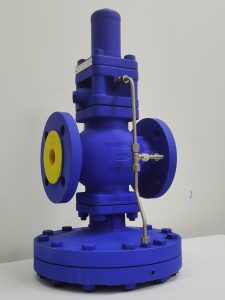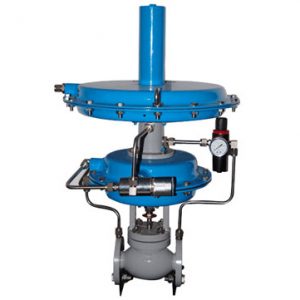For steam and industrial fluids
Pilot operated diaphragm pressure reducing valve can be combined on the same main body of multiple pilot valves, used to achieve two-stage pressure control, temperature and pressure control, remote control and other functions.
In order to achieve the most stable operating condition, an external pressure sensing line must be used. This allows downstream pressure to feed back to the underside of the pilot diaphragm, balancing the spring force, causing the pilot valve to throttle.
This settles the pilot valve allowing a constant flow across the main diaphragm. This enures that the main valve is alse settled to give a stable downsteam presure.
When downstream pressure rises, the pilot valve closes, and pressure is released from the main valve diaphragm through the control orifice, to close the main valve. Any variations in load or pressure will immediately be sensed on the pilot diaphragm, which will act to adjust the position of the main valve, ensuring a constant downstream pressure.
Improved Quality of Material Being Heated
Accuracy of pressure reducing valve’s secondary set pressure is within ± 0.01 MPa.Even if the steam flow (load) to the equipment or the primary pressure at the reducing valve changes, the Shock-absorbing Spherical piston (SAS) supplies steam at a constant pressure in order to maintain the temperature of the steam used as the heating source.
Easy to Adjust
Pressure adjustment is simple and can be done by using the cover cap as the adjustment spanner.
Long Service Life
Rust presents a high risk to vital areas of the system. To eliminate this, all major valve components are made of stainless steel to prevent rust and corrosion.








